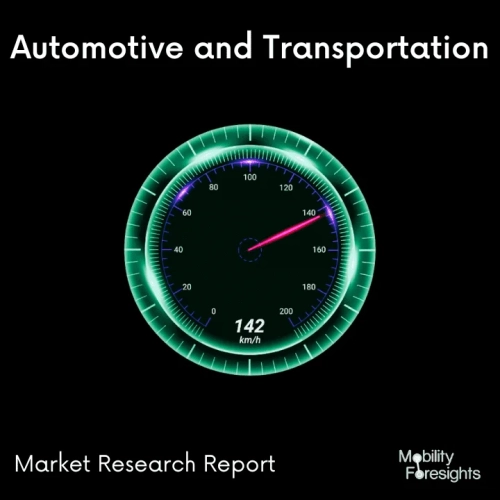
- Get in Touch with Us

Last Updated: Apr 25, 2025 | Study Period:
The European autonomous tractors market is experiencing significant growth, propelled by advancements in precision agriculture and the rising need for automation to address labor shortages in the farming sector. These tractors, equipped with advanced sensors, GPS, and AI technologies, offer farmers the ability to manage fields more efficiently while reducing human error. The ongoing development of fully autonomous models, which require little to no human intervention, is further accelerating market demand.
Technological advancements, particularly the integration of AI and machine learning, have been instrumental in driving this market forward. The ability to collect, analyze, and act on vast amounts of data has led to more effective farming practices, optimizing fuel consumption, reducing environmental impact, and improving crop yields. However, challenges such as high upfront costs and limited awareness among smaller farms remain. Additionally, fragmented regulatory frameworks across Europe pose a challenge for manufacturers, complicating the widespread deployment of these tractors.
The autonomous tractors market in Europe refers to the segment of agriculture that focuses on the use of driverless or semi-driverless tractors to automate farming processes. These vehicles rely on advanced technologies like GPS, sensors, AI, and IoT to navigate fields and perform various tasks like plowing, sowing, and harvesting.
There are different types of autonomous tractors in Europe, ranging from semi-autonomous models that require some human supervision to fully autonomous tractors capable of operating entirely without human intervention. Major manufacturers are focusing on developing models with varying degrees of autonomy to meet the needs of different farm sizes and operations.
The applications of autonomous tractors in Europe are vast, covering everything from tillage and seeding to spraying and harvesting. These tractors are especially useful in large-scale farming operations where they can significantly increase efficiency and reduce labor costs.
While the benefits of autonomous tractors in Europe include improved precision, cost savings, and enhanced productivity, challenges such as high capital costs and regulatory barriers exist. The lack of technical expertise in rural areas also slows adoption, especially among smaller farms that may not have access to the necessary support and training.

As of 2023, the European autonomous tractors market is valued at approximately USD 1.8 billion. With the ongoing technological advancements and rising adoption of precision farming, the market is expected to reach USD 5.2 billion by 2030, expanding at a CAGR of 18.2% over the forecast period. Key drivers behind this growth include the increasing labor shortages, government support for sustainable farming practices, and technological innovations in AI and robotics. By 2030, fully autonomous tractors are expected to account for over 45% of the total market share in Europe.
One significant trend shaping the market is the integration of AI, IoT, and robotics into autonomous tractors, which enables real-time data analysis and precision agriculture. This technology allows farmers to make data-driven decisions, optimizing crop yields while minimizing waste.
Another key trend is the increasing adoption of semi-autonomous tractors, particularly in countries like France and the UK. These tractors provide a cost-effective solution for mid-sized farms, serving as a bridge toward fully autonomous models.
Sustainability and environmental concerns are also driving the market, with autonomous tractors helping to reduce carbon emissions and fuel consumption by optimizing routes and performing tasks more efficiently. Government policies promoting eco-friendly farming are further accelerating this trend.
| SI No. | Topic |
| 1 | Market Segmentation |
| 2 | Scope of the Report |
| 3 | Research Methodology |
| 4 | Executive Summary |
| 5 | Key Predictions of the Autonomous Tractors Market |
| 6 | Average B2B Price of Autonomous Tractors by Region |
| 7 | Major Drivers for the Autonomous Tractors Market |
| 8 | European Autonomous Tractors Production Footprint - 2023 |
| 9 | Technology Developments in Autonomous Tractors |
| 10 | New Product Development in Autonomous Tractors |
| 11 | Research Focus Areas on New Autonomous Tractors |
| 12 | Key Trends in the Autonomous Tractors Market |
| 13 | Import and Export of Autonomous Tractors and Impact on Market |
| 14 | Regulations and Incentives for Autonomous Tractors, by Region |
| 15 | Major Projects Utilizing Autonomous Tractors |
| 16 | Market Size, Dynamics, and Forecast by Geography, 2024-2030 |
| 17 | Market Size, Dynamics, and Forecast by Type, 2024-2030 |
| 18 | Market Size, Dynamics, and Forecast by Farm Size, 2024-2030 |
| 19 | Market Size, Dynamics, and Forecast by Application, 2024-2030 |
| 20 | Competitive Landscape |
| 21 | Growth Strategy of Leading Players |
| 22 | Market Share of Vendors, 2023 |
| 23 | Company Profiles |
| 24 | Unmet Needs and Opportunity |
| 25 | Conclusion |